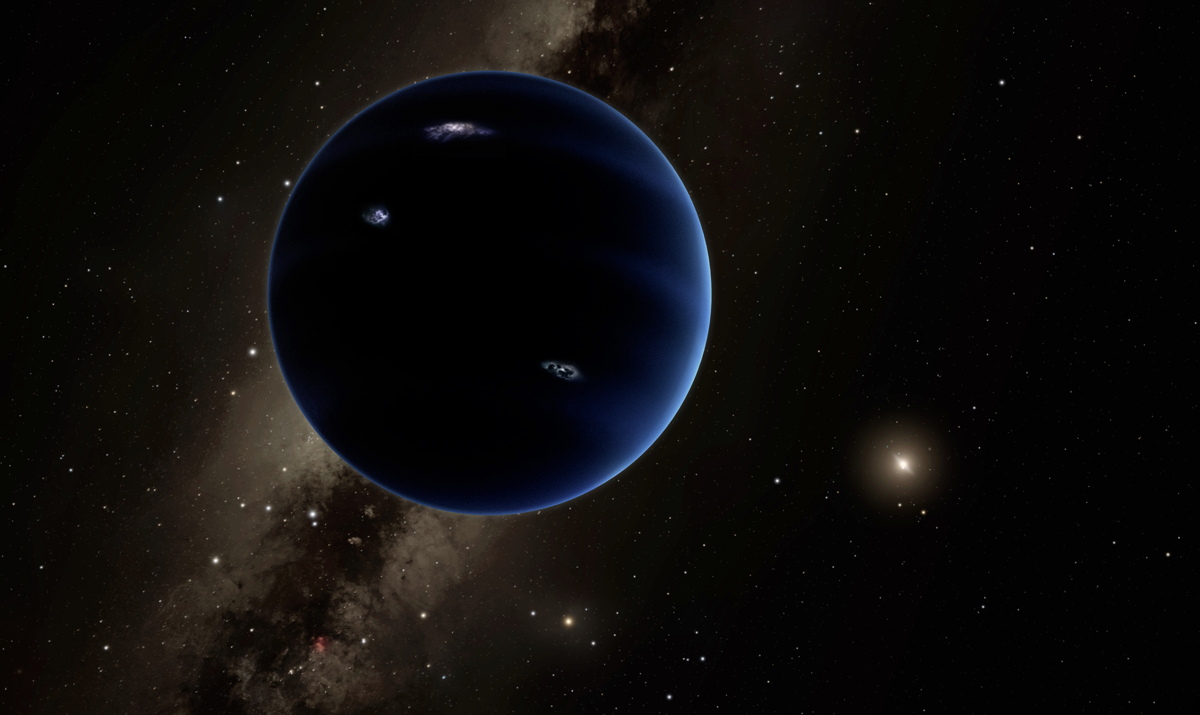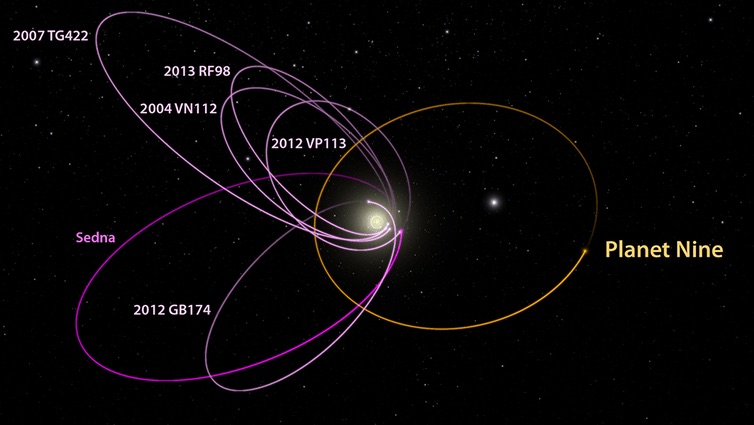Planet Nine? 'Extreme' Objects Hint at More Evidence of Possible Unseen World

A new salvo has been fired in the back-and-forth debate about the existence of Planet Nine.
In 2014, astronomers Scott Sheppard and Chadwick Trujillo suggested that a giant unseen "perturber" may lurk in the far outer solar system. The duo based this hypothesis on peculiarities in the orbits of the dwarf planet Sedna, the newfound object 2012 VP113 and several other bodies beyond the orbit of Neptune (trans-Neptunian objects, or TNOs).
The case grew in January 2016, when astronomers Konstantin Batygin and Mike Brown found evidence that the orbits of additional TNOs had been sculpted. Batygin and Brown dubbed the hypothetical perturber "Planet Nine" and calculated that, if the world exists, it's likely about 10 times more massive than Earth and lies perhaps 600 astronomical units (AU) from the sun. (One AU is the average Earth-sun distance — about 93 million miles, or 150 million kilometers.) [The Evidence for 'Planet Nine' in Our Solar System (Gallery)]

Then, last summer, Sheppard and Trujillo found two new TNOs that Planet Nine may have tugged on, increasing the number of possibly affected bodies yet again.
But a team of researchers with the Outer Solar System Origins Survey (OSSOS) project recently cast doubt on the strength of all this evidence. The apparent "clustering" seen in the TNO orbits could simply result from observational biases, the OSSOS team reported in a paper that has been accepted for publication in The Astronomical Journal.
And that's where the most recent salvo comes in. (But keep in mind that the above paragraphs provide an incomplete recounting; there have been many Planet Nine studies published over the past 18 months.) Two astronomers from the Complutense University of Madrid in Spain studied 22 "extreme" TNOs (ETNOs), which orbit the sun at an average distance of at least 150 AU and never get closer than Neptune. (Neptune lies about 30 AU from the sun and orbits on a roughly circular path.)
Specifically, the duo analyzed the ETNOs' "nodes," the two points at which the objects cross the plane of the solar system. (Distant bodies such as ETNOs tend not to lie in the same plane as the sun and the solar system's eight officially recognized planets.)
Get the Space.com Newsletter
Breaking space news, the latest updates on rocket launches, skywatching events and more!
The researchers found that the objects' nodes generally aggregate at certain distances from the sun (as do those of 24 "extreme Centaurs," very distant objects with some characteristics of asteroids and others of comets). In addition, they discovered a correlation between the nodes' positions and an orbital parameter known as inclination.
The new results back the Planet Nine hypothesis, said lead author Carlos de la Fuente Marcos.
"Assuming that the ETNOs are dynamically similar to the comets that interact with Jupiter, we interpret these results as signs of the presence of a planet that is actively interacting with them in a range of distances from 300 to 400 AU," he told Spain's Information and Scientific News Service, which is known by its Spanish acronym, SINC. "We believe that what we are seeing here cannot be attributed to the presence of observational bias."
A number of research teams are scouring the outer solar system, looking for the putative Planet Nine and/or more objects that have fallen under its gravitational sway. So the new study, which was published late last month in the journal Monthly Notices of the Royal Astronomical Society: Letters, is far from the last word. Stay tuned.
Follow Mike Wall on Twitter @michaeldwall and Google+. Follow us @Spacedotcom, Facebook or Google+. Originally published on Space.com.
Join our Space Forums to keep talking space on the latest missions, night sky and more! And if you have a news tip, correction or comment, let us know at: community@space.com.

Michael Wall is a Senior Space Writer with Space.com and joined the team in 2010. He primarily covers exoplanets, spaceflight and military space, but has been known to dabble in the space art beat. His book about the search for alien life, "Out There," was published on Nov. 13, 2018. Before becoming a science writer, Michael worked as a herpetologist and wildlife biologist. He has a Ph.D. in evolutionary biology from the University of Sydney, Australia, a bachelor's degree from the University of Arizona, and a graduate certificate in science writing from the University of California, Santa Cruz. To find out what his latest project is, you can follow Michael on Twitter.









